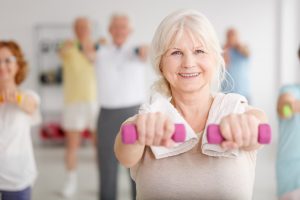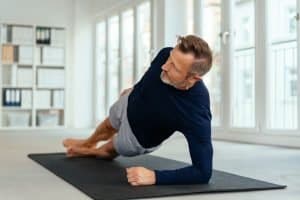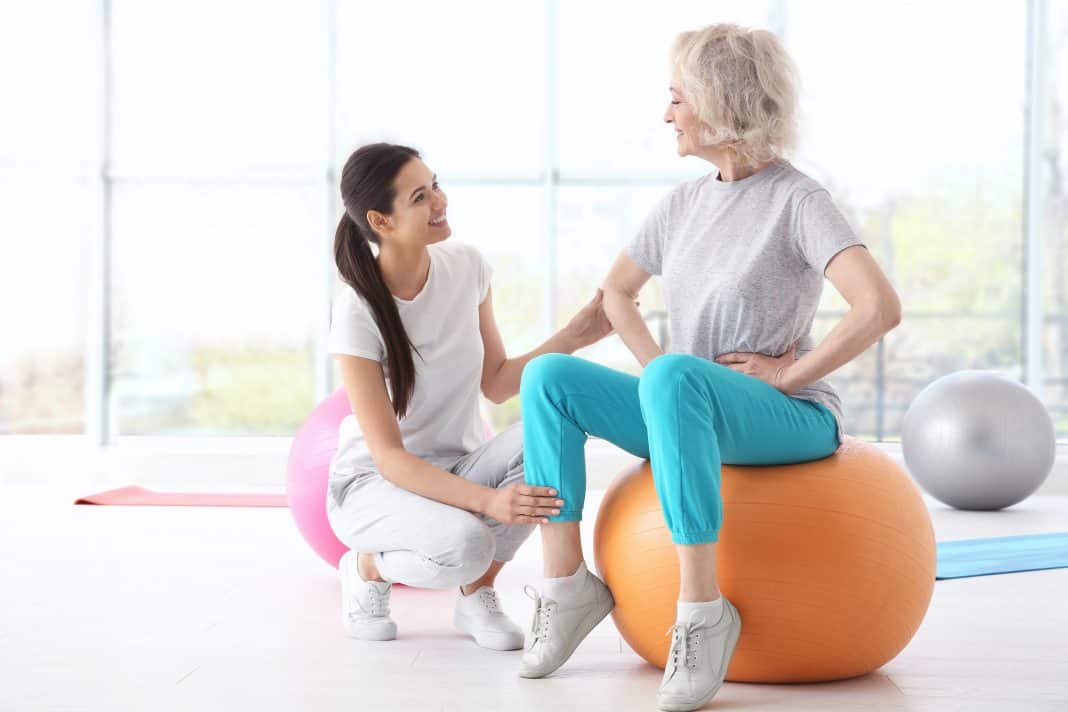My 70-year-old grandmother could run circles around me if she wanted to – she absolutely loves staying active, as it keeps her body, mind and soul running positively. However, that doesn’t mean she isn’t aware of her physical limits.

As we get older and have experienced more ‘wear and tear’, it’s natural that our bodies are putting forth more challenges when it comes to physical activity, and thus the way we exercise may have to alter.
Accredited Exercise Physiologist and Co-Owner of Studio 99 Fitness Centres, Tim Douge explained: “Older Australians have the highest rates of physical inactivity in the country.”
According to Mr Douge, there are a number of factors that may lead to physical inactivity among older Australians, “including simple changes in life priorities” as well as the fact that many services may “only [be] geared to support young people”.
“This [physical inactivity] leads to a significant amount of deconditioning in older Australians, which is the true cause of injury upon exercise commencement,” he said.
Potential injuries and risks
The older we get, the more physiological changes we see.
For example, “… a loss of elasticity in connective tissue, some normal joint degeneration and a high prevalence of chronic disease like arthritis or osteoporosis” being among some of the changes that may occur, according to Mr Douge.
“When older people resume exercise for the first time, it is often the unfamiliar loading in a deconditioned state, which will cause injury,” Mr Douge explained.
Additionally, older people may have an increased risk of falling, which, Mr Douge says “is also a hazard that’s present when exercising”.
“This accounts for a number of accidental injuries when exercising, but this risk can be easily mitigated by adjusting the environment or level of supervision to suit the individual,” Mr Douge continued.
“Overload injuries like tendinopathies and muscle strains are also common with people often moving through unfamiliar ranges of motion combined with the loss of elasticity in the muscles and tendons.
“These can be avoided by prescribing movements that the individual is already familiar and confident with, and which mimic everyday activities.”
Depending on the individual and their experience, each range of exercises that they can perform safely will be different.
Mr Douge discussed the relevance of particular exercises to risks and injuries:
“For example, it is recommended for people with osteoporosis to lift heavy weights – however, if a person has never done any resistance training, lifting too heavy, too quickly would likely cause injury.
“With that in mind, any type of exercise can also be beneficial. The important thing is for the individual to enter into their exercise program at the level suitable for them.
“This is where the help of an Accredited Exercise Physiologist can be valuable,” he advised.
Exercising the right moves
Ensuring that the program is catered specifically to the individual is a key factor in protecting the health and safety of the person exercising.
“A well-balanced program is important for all ages, not just older people,” Mr Douge said.
“Resistance exercise once or twice per week is important to maintain muscle and joint health, as well as provide metabolic benefits, cardiovascular exercise on most days of the week maintains heart and lung health while flexibility and balance training can help reduce the risk of falls.
“It’s important that these types of exercise are applied to the individual to help maintain or enhance the capacities of their current lifestyle to keep them doing the things they enjoy.
“In addition, all of the exercise types mentioned produce significant protective factors as well when it comes to preventing presentation or progression of disease like cancer, arthritis, diabetes, heart disease, chronic obstructive pulmonary disease and neurological disorders among many others,” he said.
Tips on exercising safely
Mr Douge lists his key tips for exercising safely as a senior:
- “Seek guidance from a professional to start a program at the appropriate level.
- “Start with things you are already comfortable with. For example, walking or dancing are great forms of cardio and can be done regularly and safely.
- “Exercise with a friend or group. Not only is the social interaction more enjoyable but a group adds an element of safety if an accident should occur.
- “Remember it’s a lifestyle change and should be done with the intent to continue long term. Your exercise doesn’t need to be flat out exhausting, it just needs to use your whole body, be a manageable intensity and be enjoyable.”
Exciting exercises can also include swimming and walks along the beach or scenic views – this is what my grandmother normally chooses to do to keep fit when she’s not out-running me.
For more and to read the full feature as it appears in the August issue of Retail Pharmacy Assistants e-magazine, visit: rpassistants.com.au/magazines/retail-pharmacy-assistants-august-2021/







